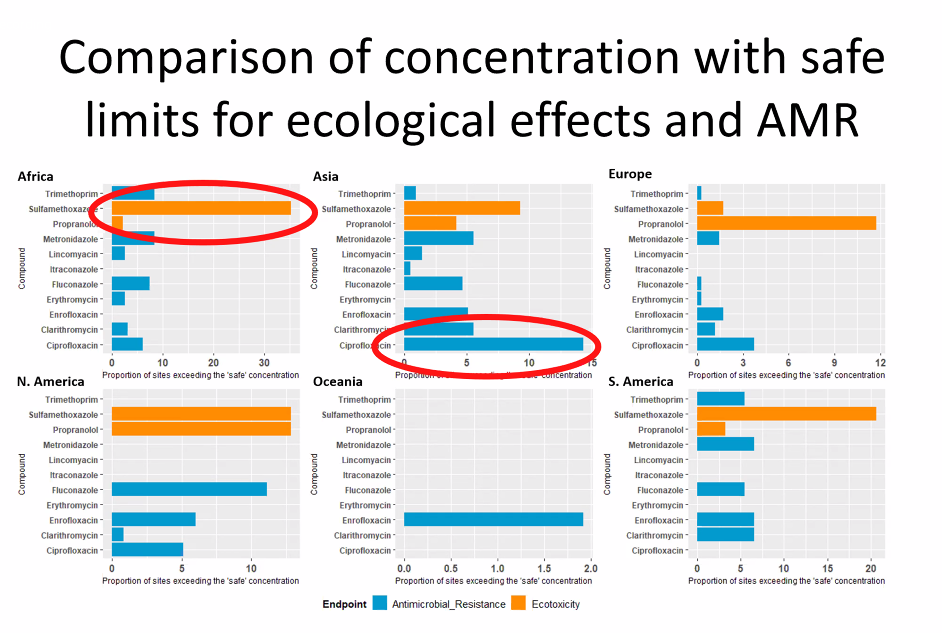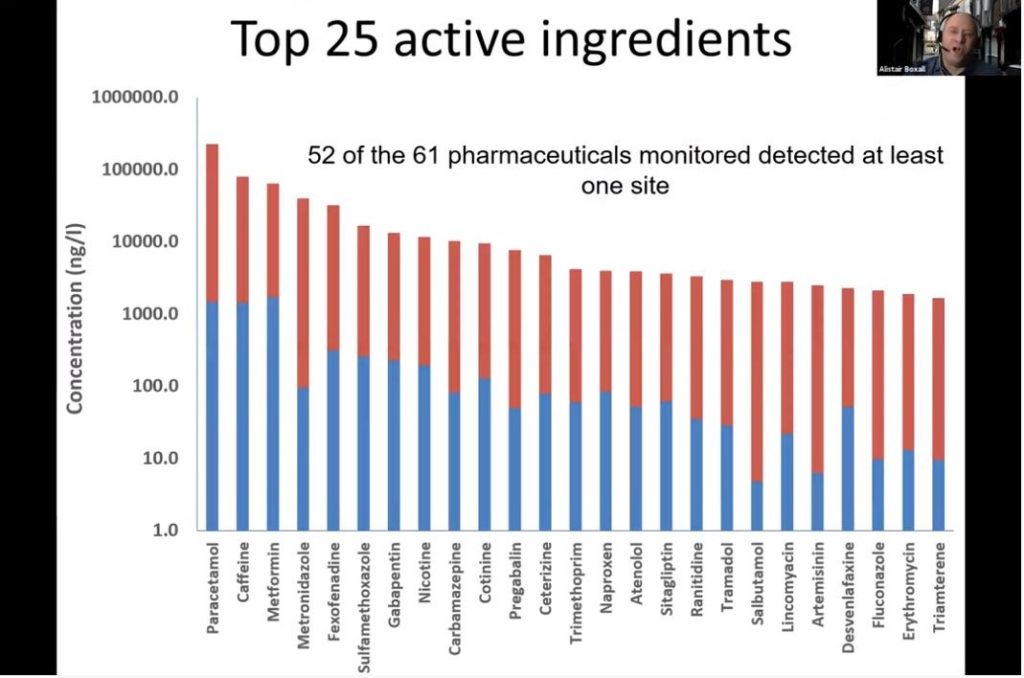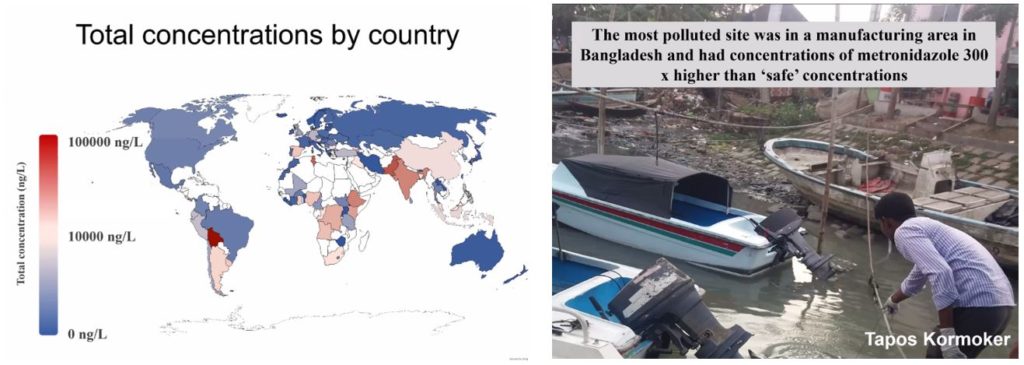We had near-record sign up for our Earth Day Moos lecture delivered by Alistar Boxall, who holds a doctorate in ecotoxicology and environmental chemistry, from his home office in near the University of York in England. Whether or not it required him to wear “proper trousers” was a matter of discussion for those who stayed on the Zoom call until the very end (watch it all here).
It is clear from his presentation that the pharmaceuticals we use end up in the environment. This is because wastewater treatment plants do not attenuate them—if they’re even delivered to a treatment plant in the first place. Some may be captured in sludge, but others run right through the treatment train and can even become more harmful when combined with chemicals in that process. Some enter the water directly.

Two levels of safe limits for these compounds can be measured: the concentration at which antimicrobial resistance may develop, and the concentration that is toxic to ecosystems. However, even though we are getting nowhere near a therapeutic dose from water, we do not know the impacts of low concentrations over time or how they may become concentrated in the environment.


Water equity
The problem is even worse in developing countries that lack basic wastewater treatment and in places where pharmaceuticals are manufactured. River water in India near a drug manufacturing site tested extremely high for metronidazole, for example, and the most polluted areas in the study were waters near sewage, hospitals, and farming or industrial sites. In Nairobi, Kenya, the team collected samples from water where untreated sewage emptied directly into a river, and another site where tankers hauled the contents of septic tank, dumping directly into the river. One Ghana site (pictured at the top of this page) was adjacent to a waste dump where other countries export waste—including hazardous electronic waste and likely medical waste. Think about the countries where the recent COVID vaccine was developed and you can begin to see the environmental justice issues this topic raises.

The ubiquitous presence of pharmaceuticals in our water may seem overwhelming because we are not likely to stop using them and the cost of upgrading all treatment systems is prohibitive. That’s why the event ended with a panel discussion discussing concrete steps we can take to minimize the problem. There are safer drugs, lower effective doses, and more responsible ways to use medication—but it’s best to keep unused pharmaceuticals out of the waste stream.
Panel discussion with local voices
Mark Ferrey and others at the Minnesota Pollution Control Agency (MPCA) have been studying pharmaceuticals in the environment since the first U.S. Geological Survey study came out in 1999 showing substances’ presence in lakes and rivers in the region.
Eva Carlson, one of the founders of RoundtableRx at the University of Minnesota’s School of Pharmacology, described a student-led effort to get usable pharmaceuticals out of the waste stream and back into circulation where they could do good. The MPCA has placed medication collection bins in 25 counties. Find the one nearest to you. Alistar mentioned that only 16% of pharmaceuticals are taken to a proper disposal site, so there’s a lot of room for improvement!
Proper drug disposal
Freshwater also received a very thoughtful follow-up email from Jennifer Volkman, coordinator of both the Statewide Household Hazardous Waste and Medication Collection Programs, and a colleague of Mark Ferry. Jennifer was instrumental in getting Minnesota’s collection network set up, working with other MPCA staff, the Drug Enforcement Administration, and the Board of Pharmacy. She noted that we are fortunate that both law enforcement agencies and pharmacies collect pharmaceuticals in Minnesota for incineration or removal to hazardous waste facilities. Although medicines are collected mainly for other reasons (to prevent poisonings and abuse), these programs help to keep drugs from being introduced into the environment through flushing and landfilling.
We noticed a number of new attendees from the University of Minnesota’s Veterinary School. This may be related to the fact that 70% of antibiotics used in the United States are for livestock production. A study by the University of Minnesota in 2007 noted the presence of sulphamethazine, a common antibiotic given to livestock in various crops, apparently taken up with water into the water treatment plant. This aspect of the problem was not addressed in the Moos lecture.
Future Moos speakers & topics
Is that something you would like to learn more about? Send suggestions for other dynamic speakers on emerging topics to Research and Policy Director Carrie Jennings.